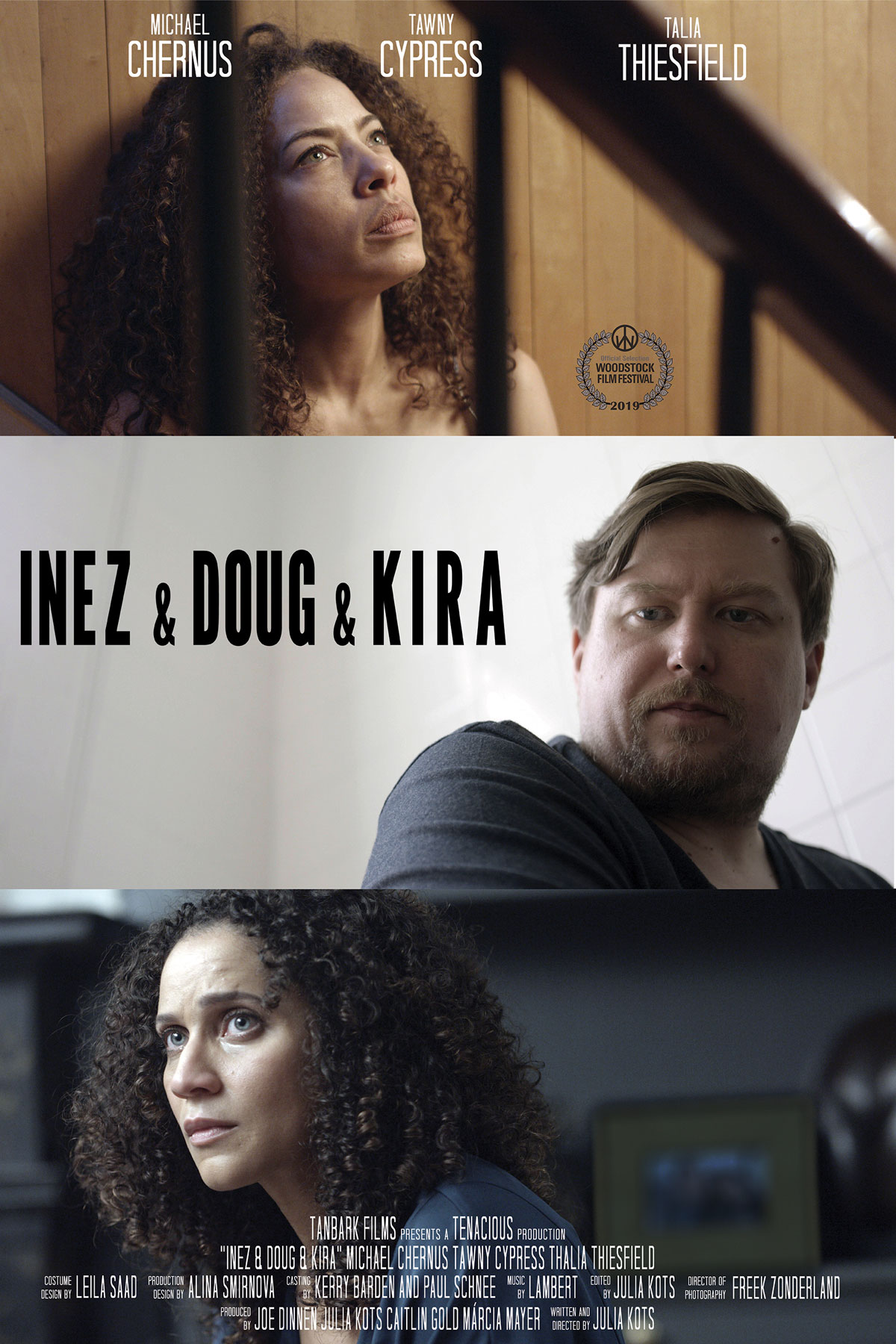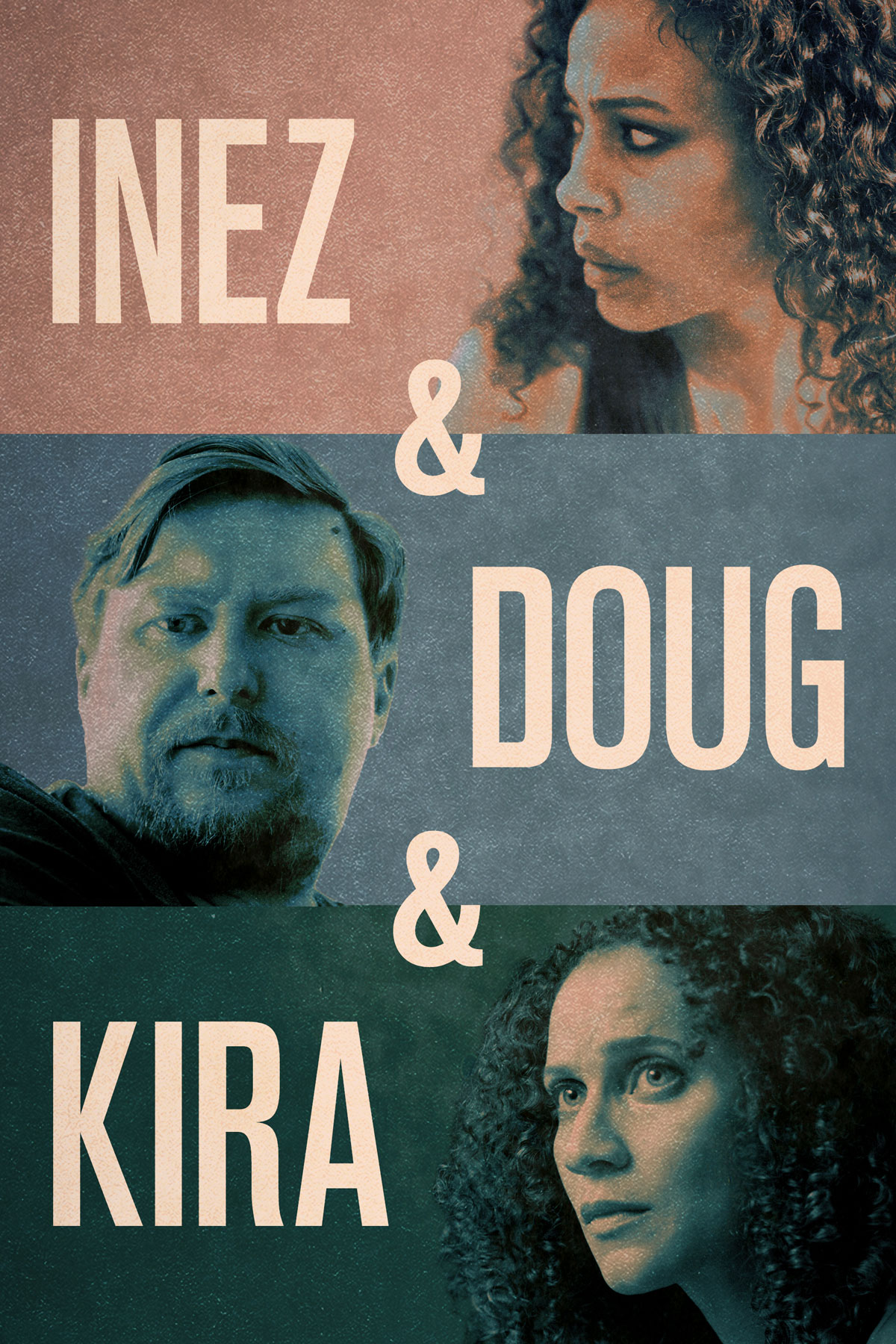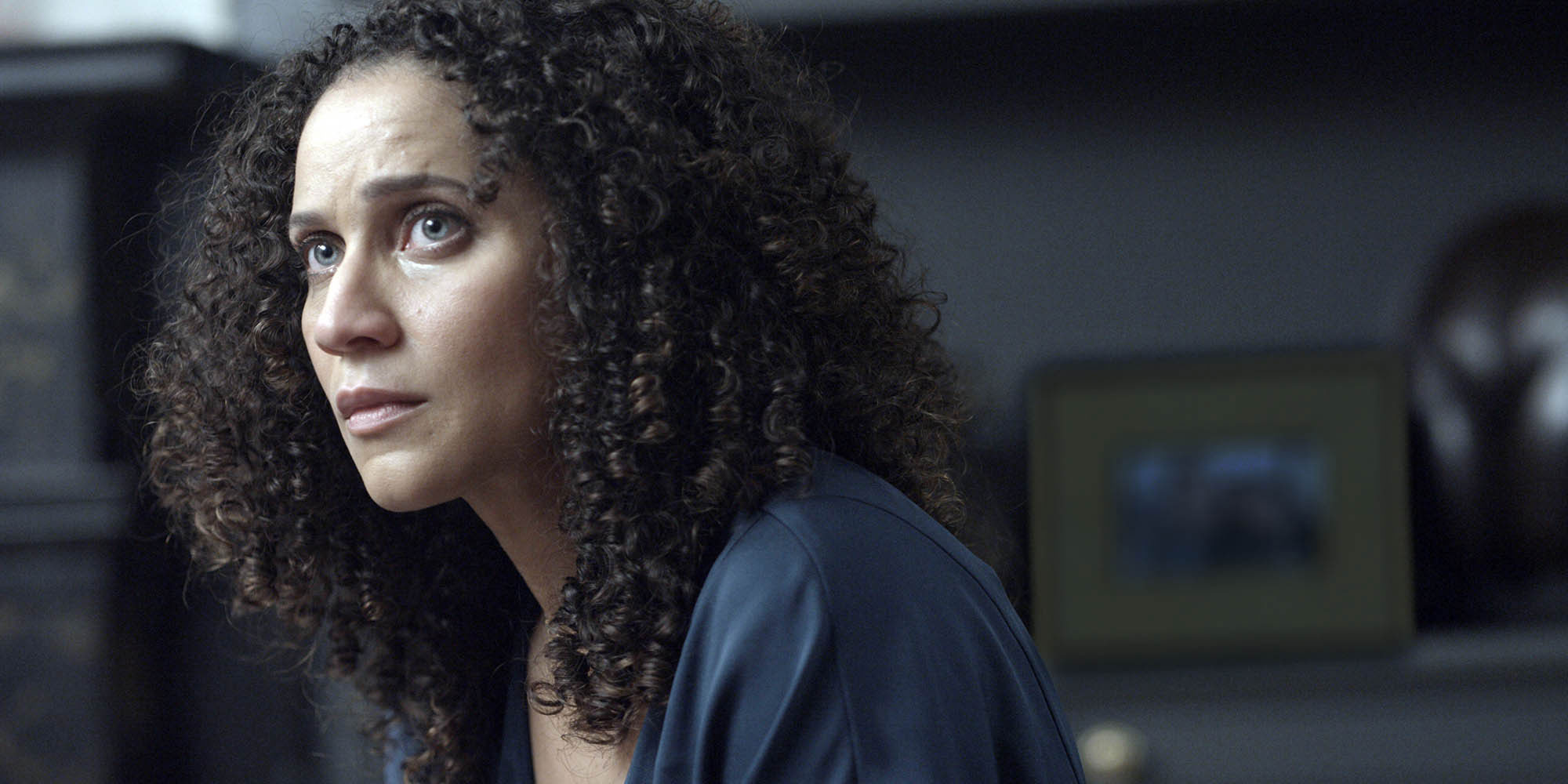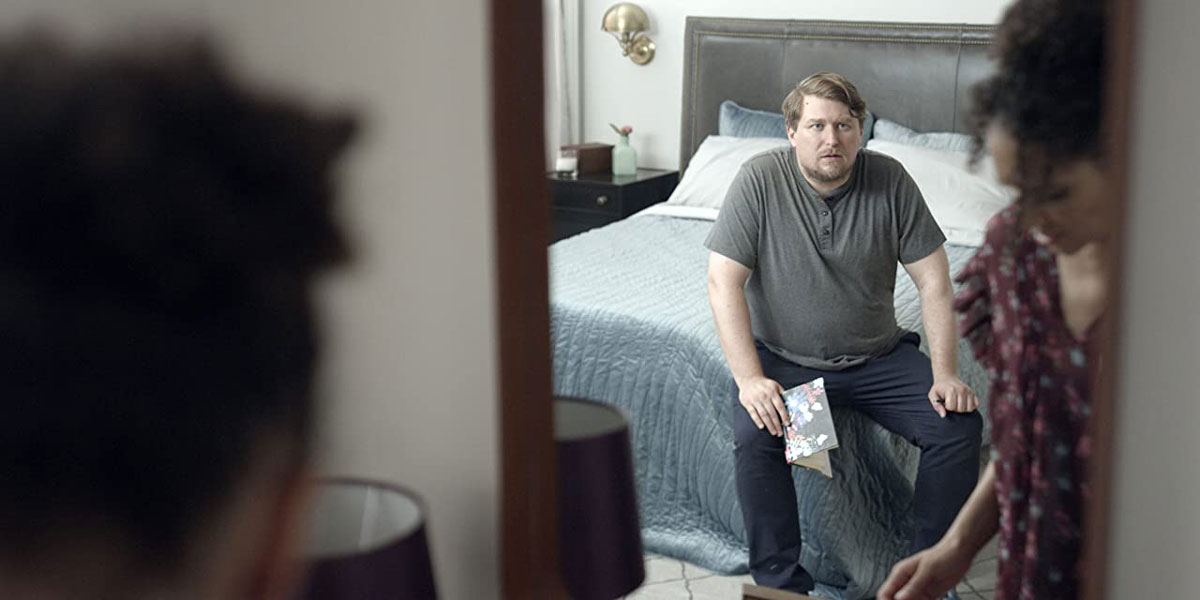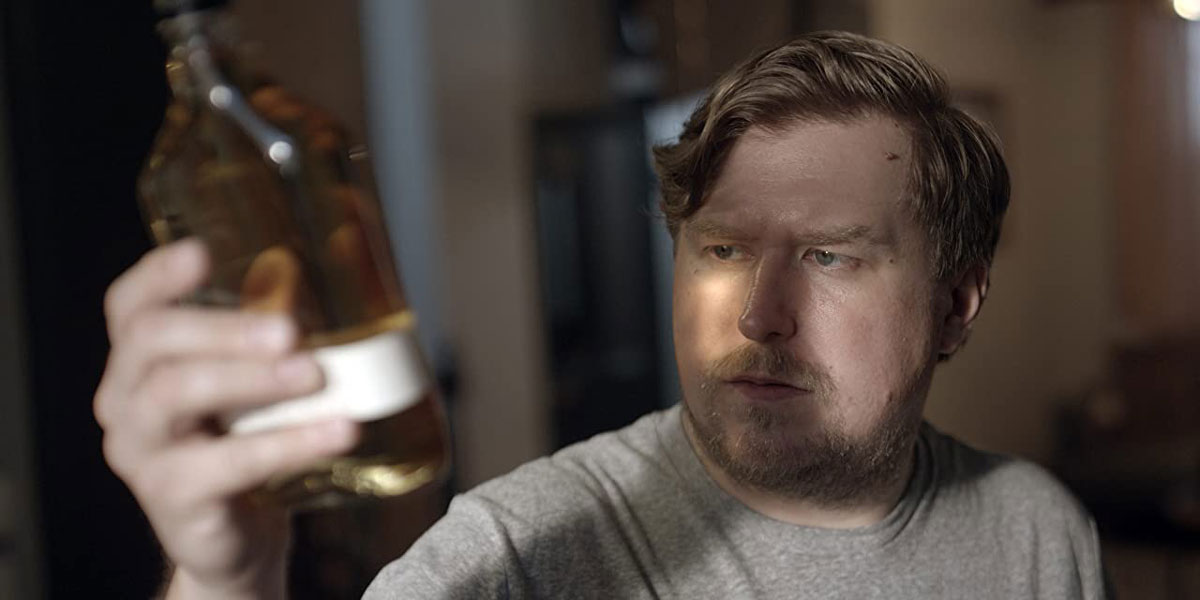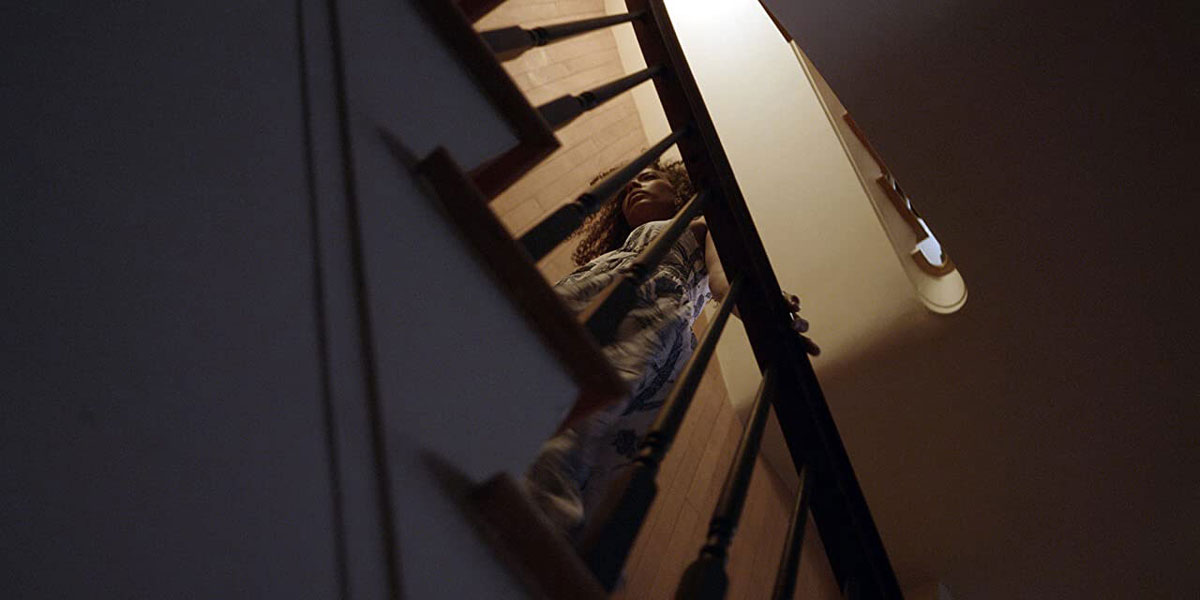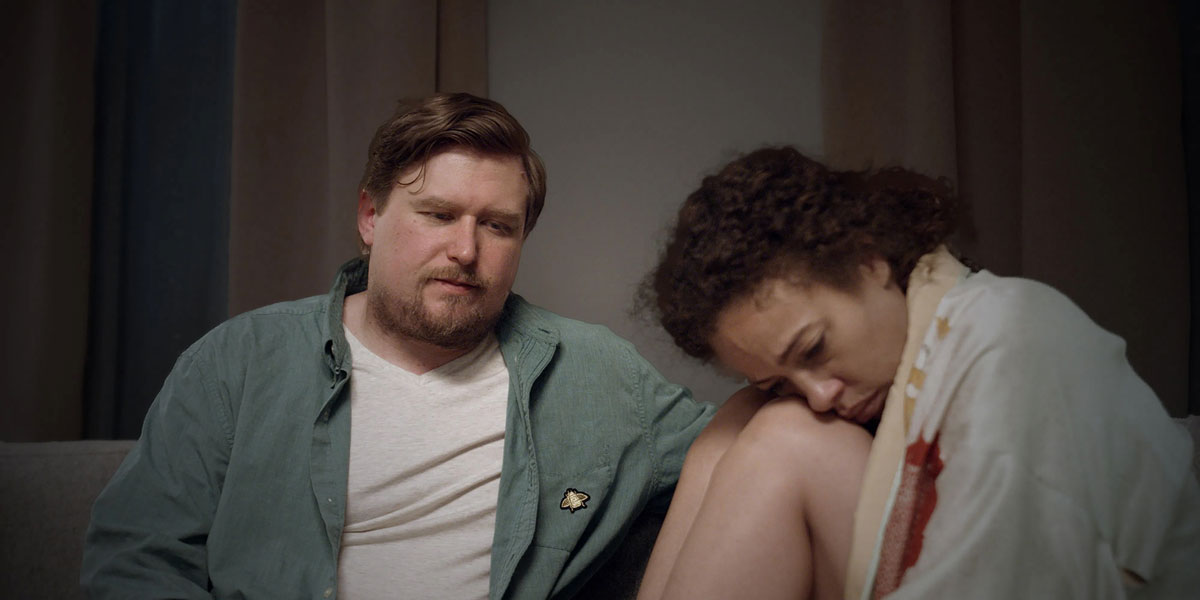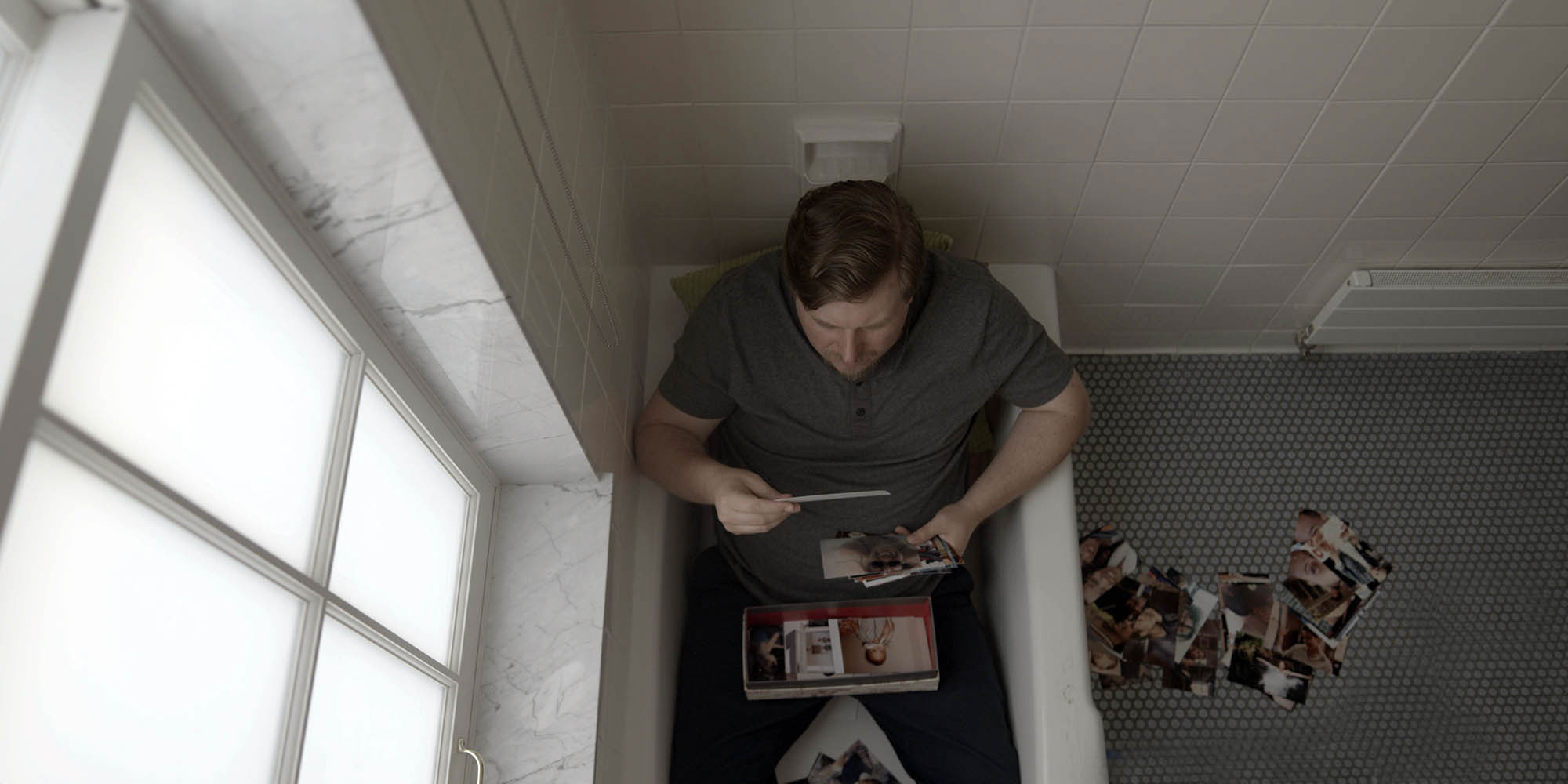
Niche, Please!
What to Expect When Your Film Doesn’t Fit Into Any of Those “Boxes”
January 28, 2021
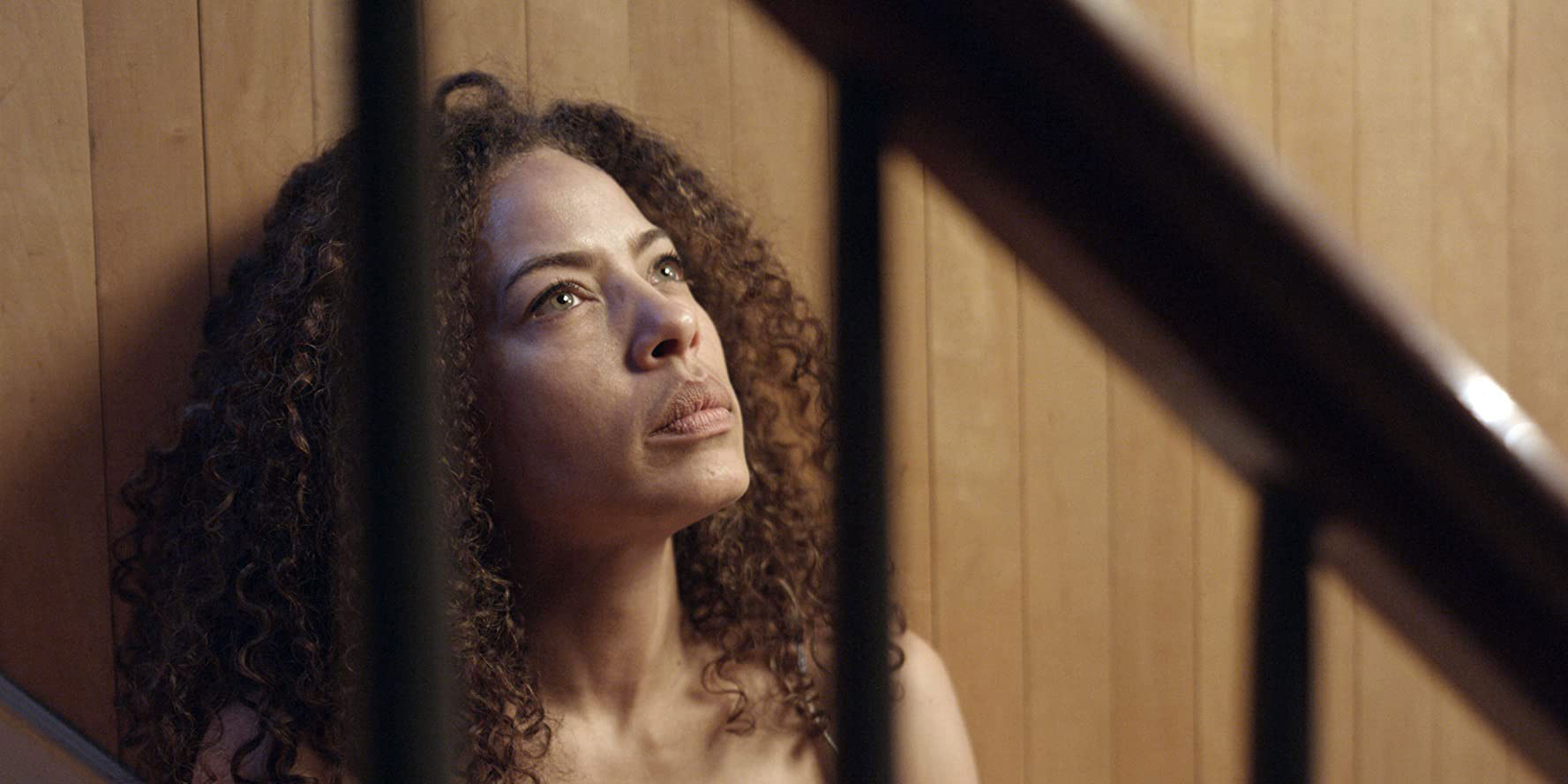
Julia Kots is the writer & director of Inez & Doug & Kira.
For the last decade I have been working full-time as a freelance editor in both narrative and documentary, with credits ranging from PBS to the Oscar®-nominated film My Week With Marilyn. In my off-hours, I kept writing scripts and kept trying to finance them. One project nearly came together and fell apart, twice. I had name talent attached for an edgy but commercial romantic comedy. Many companies liked the script, but we kept hearing that they didn’t feel comfortable giving $1.5M (that film’s budget) to a first-time feature director. I finally realized that the only path forward was to write something that was microbudget enough that I could either finance myself or crowdfund. That script, Inez & Doug & Kira, turned out to be a suspenseful dark drama—with flashes of dark comedy and surrealism—about the collateral damage of mental illness.
Most of my other scripts are comedies. This is my first drama. Microbudget comedies tend to take place at large family gatherings: weddings, funerals, etc. and I didn’t feel I had anything new to add to that specific subgenre. This film required a slower pace, because fewer scenes, because fewer locations, because tiny budget. However, one good thing that came out of having such a dark and intense script was that it attracted the kind of acting caliber that would normally not be interested in tiny indie comedies.
Inez & Doug & Kira tackles the themes of mental illness, suicide, substance abuse, infertility, and sibling rivalry. The story is ultimately rooted in experiences from my life and the lives of people close to me. I mined some personal experiences, including my life-long struggle with depression and a childhood friend who diagnosed as bipolar in her mid-20s, radically altering her life and our friendship. I have been interested in exploring mental illness and suicide cinematically for many years. I have two short films on the subject of suicide and another feature script, although those are dark comedies.
I am particularly concerned by end-of-life issues. I believe that in a truly free society, people should have full bodily autonomy and, to me, that freedom extends beyond reproductive rights. I think that people should be able to end their life with dignity for themselves and those they leave behind. I think that we, as a society, have made some progress in that area. Kevorkian served 8 years in prison, but we now have several right-to-die states. I believe that what they offer is still very far from what is needed, given the fact that we have an aging population that’s living longer and longer thanks to medical advances.
I fully understand that it’s a very thorny issue, especially when it comes to diseases like dementia and Alzheimer’s, where the mental deterioration invalidates the person from having any kind of say in how his life and the lives of his loved ones will be impacted for possibly decades. My own grandmother, who died in a nursing home from COVID this year at the age of 98, had dementia for close to 20 years. She didn’t recognize her family for the last 7. Whereas the films I have written and shot do not feature a political angle, it is one of the real-life kernels of my inspiration, and I do hope to tackle a more head-on version of this issue at some point in my work.
It is important for me to note that the suicide rate in the United States has gone up by 30% in the past two decades, especially in people with mental illnesses like bipolar disorder (what the title character Inez suffers from). So, I believe it is urgent to bring this uncomfortable subject matter to the forefront of our social consciousness and discuss the mental health crisis in its fully complex and nuanced form.
When I first spoke with The Film Collaborative, they understood why I wanted to make the film, but also wanted to know how I thought the film could be received as I was making it… in other words, what I thought would be the film’s marketing niche. David Averbach asked me if mental illness was my brand. That’s a tough question. As a filmmaker, I’m loath to being pigeonholed into a single subject matter. I’m not the “Suicide Lady.” I write about all sorts of things, including a lot of lighter subjects.
The first time I spoke to Orly Ravid on the phone and outlined my situation, she said, “So you have a Woodstock premiere, no stars, and no niche. What were you thinking?” While I appreciated Orly’s straightforward demeanor, the question peeved me, because as a film/media consumer, I regrettably find that niche appeal and ideology trump story quality in too much content I have come across. I believe that writing with the intent to tick the right boxes when it comes to niche often leads to mediocre storytelling and oversimplified characters. Life is messy and complex, and those complexities are what interest me in what I’m creating and what I’m watching.
It wasn’t that I didn’t think about my potential audience as I was writing the script. I thought my audience would be people who (a) watch independent film, especially those who (b) have had experience with mental illness and/or addiction. That’s actually a relatively sizable chunk of people, but it’s not a niche per se. I did glimpse some potential niche appeal, even as I realized that the elements I had would not suffice for most niche festivals.
- Judaism: The characters of Inez and Kira are Blewish. They’re half-black / half-Jewish. The film also touches upon Judaism’s interesting take on suicide; the Non-Orthodox view of suicide is akin to death by disease (mental illness), as opposed to a willful sin. To date, the film has been considered by half a dozen Jewish festivals, but accepted to none. I don’t think this is because of lack of Jewish connection, but rather the morbid and morally ambiguous subject matter.
- African-American: Although the characters are Blewish, the film is not ABOUT their Blewish experience, so it felt disingenuous to apply to any African-American film festivals. Since I’m Jewish, but not black, I could not authentically write about the black experience, but I did want to create two challenging lead roles for actresses of color. I learned about Blewishness in an article and found it a charming moniker. It is also a play on words (Inez’s depression, “being blue.”) As an immigrant, I feel like I don’t fully belong in either my original culture or in my adopted one, and it was important to me that the sister characters also be of a background that is in-between cultures, and possibly feel shunned by both cultures. In back-story, this may have contributed to Inez’s emotional difficulties. There’s a distant echo of this in her desperate desire to “be normal.”
- Mental Illness: While, yes, the film is all about suicide, mental illness, and addiction, I also realized that it is not educational/uplifting enough to merit interest with special interest groups. Most films at niche festivals that explore such subjects are way more life-affirming and less morally complex than this one. In addition, after reading many TFC Case Studies, I understand that specialty groups will only align themselves with a film if they stand to unconditionally benefit from it, whereas aligning with a film as ambiguous as this one opens them to risk of criticism, etc. However, I believed that while the film wouldn’t qualify for such niche groups and festivals, it would resonate with those in the general public who have faced mental illness and addiction.
As I realized at script level that the film would lack a clear niche connection, I asked myself if I could make it more niche, but I just couldn’t. As I was writing, most of my creative energy was being poured into accommodating the major story constraint of budget, and to try to artificially manipulate the story into a niche felt to me like trying to fit a square peg into a round whole. Additionally, I knew this story was very dark, which is usually a tough sell. But that’s the story that was in me and it felt inauthentic to slap a redemptive face on it.
Financial Goals
I hoped to be on a single screen in NYC/LA for a couple weeks, then play on a cable channel, followed by an exclusive streaming platform. I hoped to net $115K, in order to recoup $145K of our investment money (we’re awaiting about $30K tax credit). The first $65K of this investment is my life savings, which I scraped together over 10 years. I’ve come to terms with losing it, but it would still be nice to get some of it back. Thankfully, it’s such a small amount that I can’t retire on it or even pay off my student loans (not even close!). So, losing it won’t matter much in the grand scheme of life. That said, for other filmmakers out there reading this, please think long and hard before you use your life savings to fund your work. It is exceedingly rare for an independent film to recoup.
Festival Premiere
In early 2019, once we had locked picture, we made a list of conventional distributors and sales agents with whom the producers had a relationship. We reached out to half a dozen prior to the premiere and they passed.
We premiered on two consecutive days in early October 2019 at the Woodstock Film Festival. The first night we played at Woodstock Upstate Films, a 165-seat venue that was nearly full, with Meira Blaustein, the co-founder and executive director of the festival, doing the intro and a good Q&A. This was the first time I saw the film with an audience, and I was blown away by how well it played - it felt like the room was captivated the entire time; the audience was really with us! It reminded me why we make movies. During my intro of the film, I was very thankful to the festival, everyone who worked on the film, and everyone who trekked to see it, and told some jokes. For the Q&A it was me, producers, cinematographer, and actors Michael Chernus and Tawny Cypress. The third lead, Talia Thiesfield, unfortunately couldn’t make it because she was in a show in Denver. The Q&A went very well, and people asked pointed, insightful questions, which showed me they not only “got” the film, but that they cared about these characters. We were then interviewed by Woodstock’s video team outside. At the awards ceremony, Tawny Cypress received an honorable mention, which was a great surprise to everyone, since they don’t have an acting category in their awards. The next night we were at Saugerties Orpheum, a smaller theater, and also had a great Q&A. In terms of goals at the premiere, I truly just wanted to pack the houses and have good Q&As and audience interactions, which we did. In hindsight, I realize I could have been collecting email addresses, but it was mostly people we knew, so I don’t think it was a huge loss. This festival is not really a market festival, so we knew we wouldn’t have an opportunity to sell there.
Marketing for Festivals
I emailed every contact I had (about 1,000 people) and posted on social media. My producers did too. We hired Matt Johnstone Publicity for $5K. With their guidance, we got a couple reviews and several local radio interviews. I didn’t feel like $5K was worth what we got; big-name publications don’t review festival premieres (aside from top 10 fests) and it’s hard to tell whether the local radio interviews boosted our turnout. But my producers, who have more experience, felt we did get our money’s worth.
When we had our NYC premiere, as opening night film of the Big Apple Film Festival in February 2020 (where it won Best Feature Film), I reached out to a dozen people who I thought might be interested in covering the film (writers who have similar cultural background and/or have written about my themes), but nobody replied. In my experience, cold-emailing usually has some return; it’s a numbers game. But trying to reach press by myself just didn’t work at all. I was surprised. But it did make me see that a publicist is necessary. It’s just insanely expensive, for what little you get. In hindsight, I believe that publicity is better used for the release, rather than the fest premiere. If possible, films should include a line item for both in their budget ($5K x 2).
Distribution
The week after the premiere, we reached out to 20 distributors. In the following several months of follow-ups, 12 passed and the other 8 did not get back to us. Some expressed interest in reading my other scripts.
After the 20 distributors that we reached out to passed/didn’t respond, we began looking into DIY distribution. We spoke to some aggregators who would put the film on the standard transactional platforms for a flat fee (we would retain all money from the sales) and others who offered to work on a distro-like split (commonly 80/20), but no MG. I also spent many hours researching ~700 independent screening spaces across the US and Canada. I’m a firm believer in cold emailing, having found that the return rate is usually 10%. I began emailing the theaters in early February 2020. I had a very open ended email, hoping that some theaters would do a one-night special event for a profit share, and maybe one or two would want to program it for a week. I had talked with a couple of people who had done theatrical tours with their films and they had varying results, for different kinds of films, all of them quite different from my film. I had emailed about 200 theaters and about 20 of them had responded asking to watch a link of the movie.
And then, COVID-19 happened, and the world shut down. I abandoned my theatrical outreach. All of our festival appearances were postponed, and ultimately canceled. But then I received an email through my website from 1091 Pictures (formerly The Orchard), saying they saw my film listed at Cinequest (March 2020) and wanted to take a look. They had passed on the film several months prior, when we had reached out to someone we knew there, but the company had had a complete internal reorganization since then. About 6 weeks after the Cinequest email, we signed with 1091 for streaming/digital rights and thankfully didn’t have to self-distribute via an aggregator. My two producers did all the negotiations. Our lawyer went over the contract.
1091 does a relatively standard 70/30 split, after upfront fee recouping. We negotiated a $10K cap on their upfront fees (they’ve spent a bit over $3K to date) and we also negotiated a modest Minimum Guarantee. People have asked me if because of my experience I would advise they reach out again to distributors who had previously passed on them. Truthfully, I would not advise that. I think our situation was unusual in that the company was going through a reorganization when we had first shown the film to them.
I was relieved to have 1091 pick us up because there’s a sense of legitimacy with having a proper distributor behind you, and also because I work full time, so I simply don’t have any more time or energy to do a proper DIY (or if we weren’t in a pandemic, a proper theatrical tour). They also did all our key art and a PR outreach, which an aggregator would not do. One thing I would do differently in hindsight is save PR for the Release, if there’s not enough budget to do it for both Release and Fest Premiere. Even though the 1091 PR person worked hard to get the film out there, there’s usually just one person for the company’s entire slate, while an outside publicist has the bandwidth to go further on your individual film. Also, publications are more likely to cover releases (even if they’re digital), rather than festival premieres (outside of the likes of Sundance).
The Orchard was very vocal about transparency in distribution and I have found my experience with 1091 to be quite transparent so far. They run any potential expense by us first, which I know is not common among distributors. They have created a Google spreadsheet that keeps track of everyone that they are shopping the film to, and the main PR outlets they have approached. They also have an analytics web portal that tracks all the purchases and rentals on the various streamers. So, the optics are very clear.
As far as Virtual Theatrical, 1091 said that they’d be happy to host it for us, but that they still hire theatrical bookers, even for virtual placement, and judging by their virtual returns with other films, that would result in a loss. Since I had already made that spreadsheet of 700 theaters, I considered reaching out individually to them again, but ultimately decided that Virtual Theatrical is in its infancy and not working well yet. A friend of mine with a similar-sized film is doing Virtual Theatrical and has told me that after 2 weeks at 5 Virtual theaters and a full-steam social media blast, she’s sold 12 tickets; split 50%-50% with the theaters, she’s netted $60. With my own film-consumption habits, I’ve found that I am reluctant to pay $12-$20 to watch a movie on my laptop. We decided that if a movie is streaming, there is really no benefit to having it be “Virtual Theatrical,” rather than plain old Amazon. Yes, you can charge a higher price and help out a local theater, but fewer people will rent it, because these clunky Virtual apps are not well integrated with televisions. Most awards that required theatrical for qualification did away with it for the pandemic, so that was not a consideration for us. So, for all those reasons, we did not do Virtual Theatrical. It may develop with time, but it does not seem worth it in this day and age.
We opted not to produce physical media. One friend, who made a vampire rom-com and traveled the country with it, had success selling DVDs, along with other merch. Another friend made a doc about an old country music singer and had success selling DVDs to his older audience. A third friend makes design docs and packages Blu-rays with art books, which sell well on his website, with other design merch. But for a film without cult/senior/specialty appeal, physical media does not seem worth the investment.
We got a modest offer to air the film on public television in New York. Channel Thirteen has a Saturday late night show called Reel 13, where they air classics and indies. This inspired me to research a spreadsheet of all the public television stations across the country. I tried contacting their nationwide distributor, but they said they focus on docs. So, I’m cold emailing the individual stations and have had some interested in viewing the film. It may not yield much, but (a) every bit of revenue helps, and (b) it’s good contacts for the doc I’m developing.
1091 used their in-house graphic designer for our key art (for free), which I like very much. They also used a trailer editor they’d worked with before (Ryan Kendrick; $2500) to cut a new trailer, which I think is fantastic, and has so far had over 14K YouTube views.
Soundtrack
While editing the film, I scoured Spotify for appropriate temp music, and stumbled upon a German neoclassical composer, named Lambert, whose haunting and powerful music deeply resonated with my story. I reached out to him over email (he’s in Berlin) and he responded! He liked the rough cut of the film and is a big fan of our lead actor (Michael Chernus) through his Netflix shows. My producers deftly negotiated a deal with the manager for Lambert to score the film for a fraction of his rate, in return for keeping the music rights. Universal released the soundtrack, but we will not see any revenue from it. I still got the better end of the deal, because I got a gorgeous soundtrack I could never afford otherwise.
Net Revenue Analysis
It is too early to tell, but our largest return will likely be the tax refund.
The less calculable, but more valuable revenue for me has been the education. I’ve met producers, cast, and crew that I would love to collaborate with again. In fact, the chance to work with them again is a big part of what keeps me pushing forward with new projects. I reconfirmed that helming a set is when I use the largest percentage of my potential as a human being. I have two other finished scripts and many more stories to tell, but I think I also learned that I would prefer to work with a co-writer in the future. I’ve always seen my stories like kidney stones, fully formed inside of me and painful to pass into the world. Perhaps a co-writer can be the laser that can break them up and reform them into something with more solid appeal (okay, the analogy kind of doesn’t fully hold here). And most of all, I would really love to direct other writers’ stories. And although this film is not getting the audience I hoped for, it is an extremely moving and impressive work for those who do see it. I’m very proud of it as a portfolio piece and as a piece of creative producing. I have rarely seen this level of cinematic quality shot in under 16 days, for a shooting budget of $135K.
TFC Takeaways
We are very happy for Julia that Inez managed to secure distribution, but the truth is that she could have easily not, and, in fact, that deal only re-materialized well after we had already started working with her on this case study. It seemed pretty clear in talking to Julia that she was aware that her film didn’t fit into any established marketing niches, and that she was not particularly surprised about how things played on the festival circuit. She just wanted to make the film she wanted to make without the burden of having to think about niches. And that is her right. We appreciate Julia’s comments around issues of authenticity and creating a “Blewish” character, because the issue of identity when it comes to programming at niche film festivals can get very political. But what is most important here is that we see a lot of filmmakers in Julia’s exact position, all of whom are seeking our help, and there’s not much we can do for them. So Orly Ravid’s blunt response to Julia (“What were you thinking?”) was perhaps less about Julia herself and more about the frustration that we have been talking about how important niches are for over a decade and yet we sometimes feel that our advice is not being heeded.
So, let’s put aside Inez & Doug & Kira and move on to asking what a filmmaker who is reading this case study might be able to take away from it.
The Film Collaborative is not a filmmaking apparatus. We are not in the habit of telling filmmakers what to write about. That is not our role. When it comes to marketing niches, however, we often ask filmmakers, “Who is your audience?”, and, frankly, a majority of them are not able to articulate anything useful as a distribution strategy—some subset of reachable viewers—that already actually exists in the world. While it’s important to be able to articulate an answer to this question, we are also asking because it is clear that some filmmakers have never even thought about marketing niches. Others have, but not in a way that will really help them. So, what will?
We see a lot of films that we internally call ‘niche-adjacent’—ones that, like Inez, involve but do not align squarely with an exploitable niche. It’s important to underscore that a filmmaker cannot force a film to be a niche film any more than TFC could, even if it wanted to, produce a list of edits sufficient enough to imbue a film with niche appeal. It just doesn’t work. Our Director of Festival Distribution, Jeffrey Winter, put it succinctly: you cannot really decide to make a niche film, or decide that your film is a niche film. It is the niche that decides if your film is a niche film. So, if TFC is not going to dictate what your film should be about, and acknowledges that we probably would come to a project too late to do anything about it anyway, what are we saying here?
We are not questioning a filmmaker’s long and hard-fought journey to get a film made, but rather pointing out that filmmakers need to be thinking about these questions at every stage of one’s project, and even one’s career. That’s why we asked Julia, as we do many filmmakers, “What is your brand?” In today’s independent film climate, for narrative projects, without the presence of recognizable talent in your cast, it is very difficult to gain traction if you don’t at least have a built-in niche. And filmmakers have different goals, but we encourage filmmakers to take their artist cap off and put on their business hats and ask themselves, with every new project, whether that project is conducive to building an audience over time and from project to project. As a business person, are you building a brand that folks want to buy—no, we take that back—are you building a brand whose target audience is possible to reach, given real world logistical or budgetary constraints?
While it’s not for The Film Collaborative to tell someone what film they should or should not make, as we stated above, we would be remiss in pointing out that when filmmakers who “want to make what they want to make,” while also end up self-financing a good portion of their film, we wonder if so much frustration has built up after several rejections that it prevents them from listening and receiving feedback about their project.
Our Director of Fiscal Sponsorship, Lynnette Gryseels, reminds us that when projects seek funding, a filmmaker should not only be interested in the money. Of course, you need money to make the project, but you also need to prepare an application, be able to articulate your ideas, get feedback, refine, workshop, and network. And although many funders, Lynnette says, might reject a project because it is not right for them, oftentimes they will suggest other funders whom they think might be interested.
There are also many film markets that filmmakers can to apply to that hold one-on-one meetings. They are sometimes called Film Financing Workshops, but even if one doesn’t walk away with a cent more than they had when they came in, gauging reactions from the industry on your progress up until that point is just as valuable. Platforms, film festivals programmers, and distributors all attend these meetings, and it lets people know that the film is up and coming. Moreover, getting people to donate to your film builds your audience that can be leveraged at a later date. And after all that, if you can’t identify one niche audience, do research on films that are similar, and learn what distribution plan they utilized, then one can only expect limited results, because at a certain point, it’s too late.
TL;DR
After several projects failed to get off the ground, Julia designed the script of Inez specifically to be ultra-low-budget, and poured her heart, soul, and savings into it. While she was able to attract excellent talent with her dark, twisty script, sadly, her film wasn’t able to break into either the mainstream or the niche market. Shortly after success with a publicist (and the incumbent sticker shock at publicist pricing), COVID disrupted any potential for a DIY-theatrical. 1091 then acquired the film with a nominal MG (which it had, oddly, previously passed on—but there had been staff changeover) and is now doing modest business with it, while maintaining the transparency they were famous for as The Orchard.
